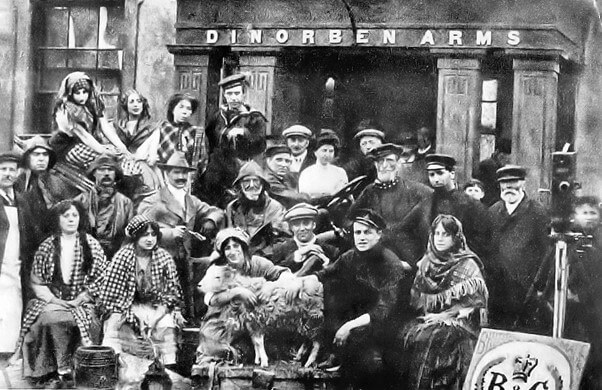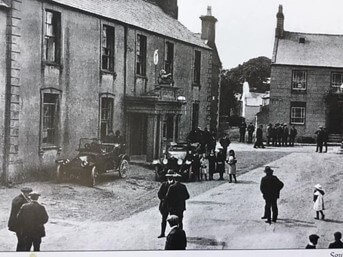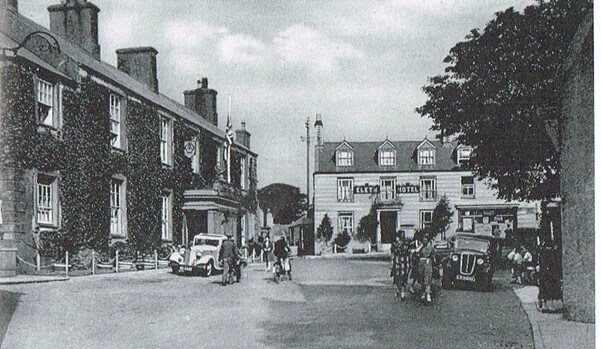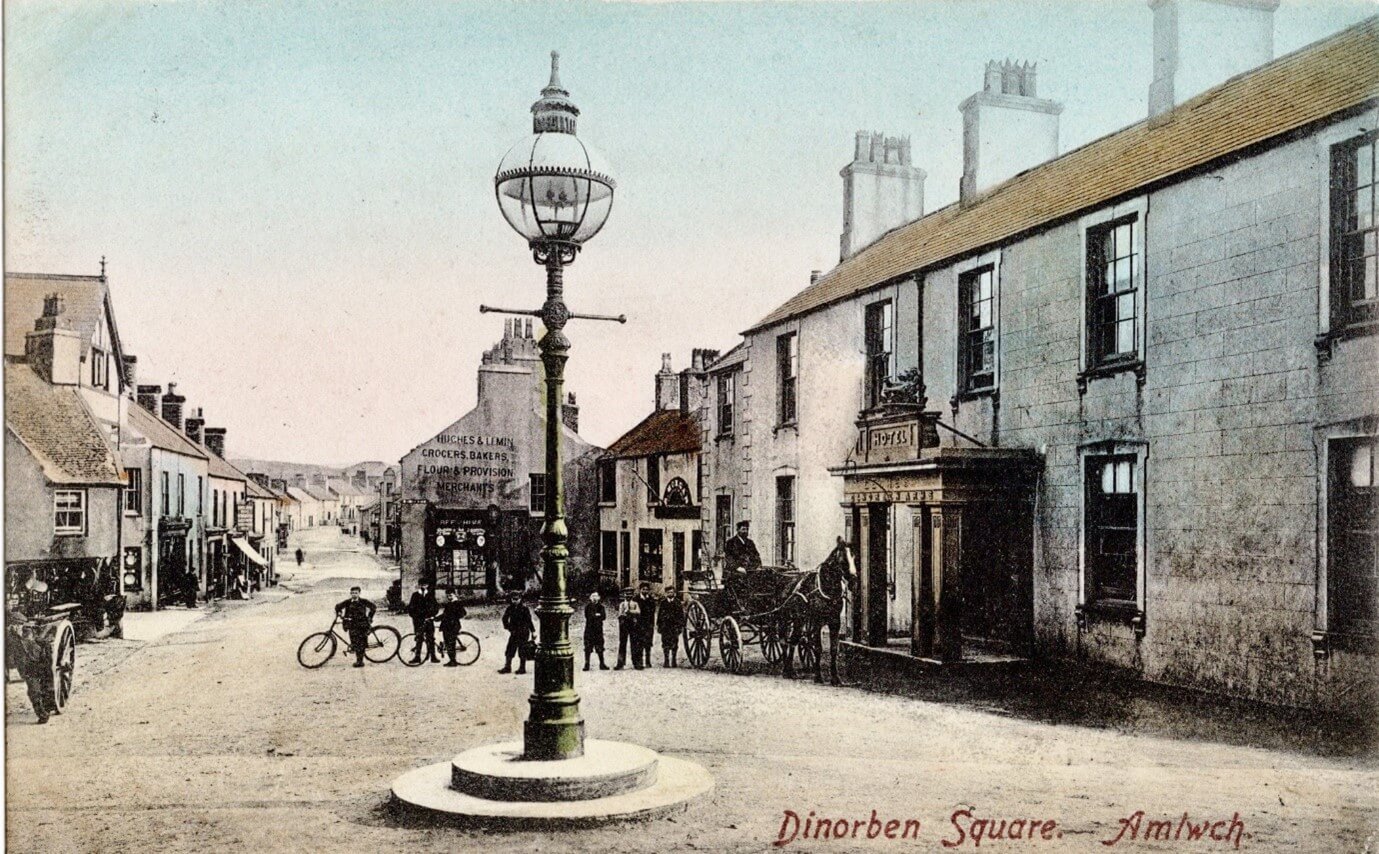History
The Dinorben Arms Hotel
Part of the Heart & History of Amlwch for almost 250 years

The town of Amlwch developed from a small coastal fishing village with just a few houses following the discovery of copper at the nearby Parys Mountain in 1786. The historic core of the town centres around what is known as the Dinorben Square in which the hotel is situated.
Originally known as “Ty Mawr.” This hotel has been at the centre of social life in Amlwch since at least 1784. It was used as a courthouse in that year when a young man called William Roberts was stripped to the waist, tied to horse back and whipped to the port and back for stealing.
The cellar is hewn from the rock under the hotel and the local tradition is that it was once the cells used in the courthouse above. Until recently the cellar had a cobbled floor and an iron gate.
In 1813 the hotel, still known as “Ty Mawr” was put up to let by its then owner Stephen Roose.
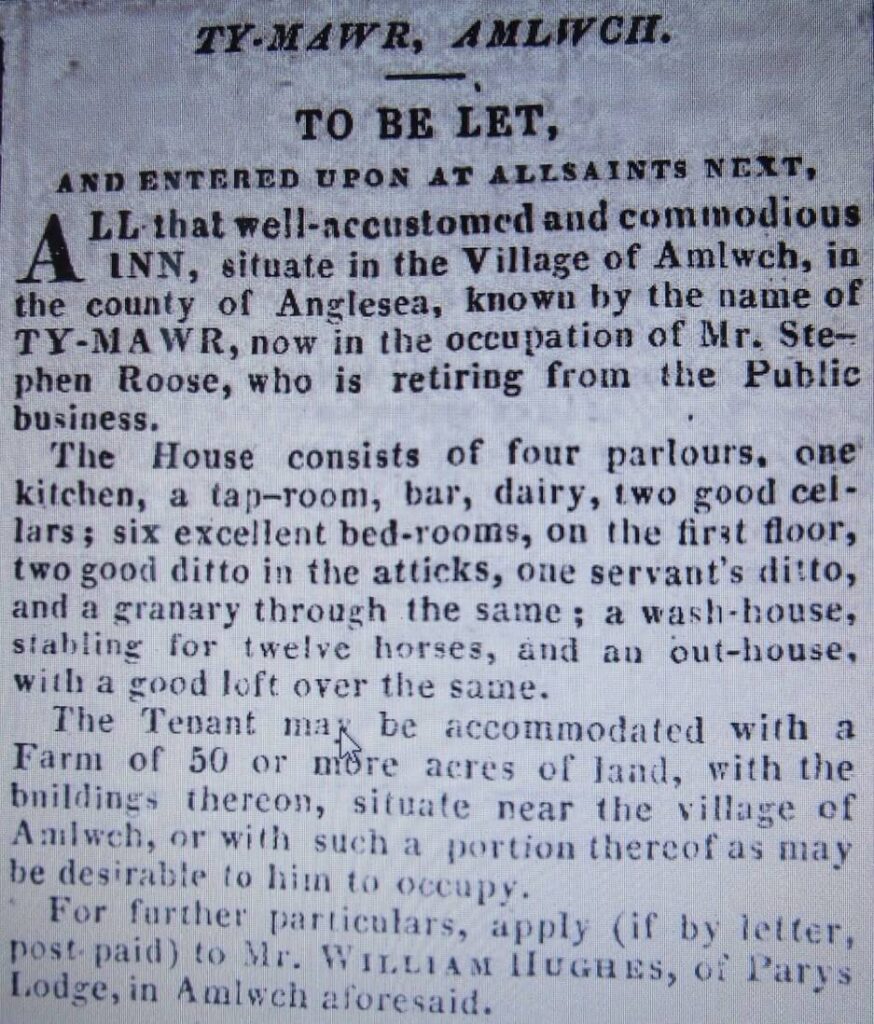
The hotel has been architecturally described as a double pile building of two-storey with mezzanine attics and porch in Georgian style. The external design is still present together with an ornate internal staircase.
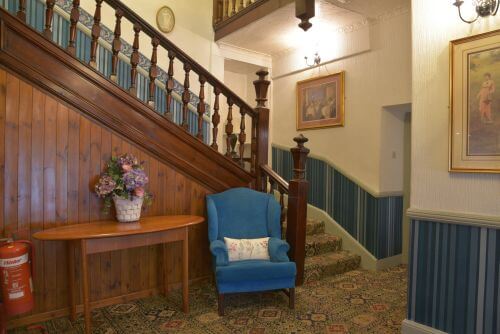
In 1817 the Anglesey grain harvest had failed following a very wet summer. The result was widespread poverty and hunger for the people of Anglesey.
Despite the local problems grain was still available to those in England who could afford to pay for it. Anglesey corn was still being exported via Amlwch port.
It was the transfer of wagon loads of such corn to a ship called “The Wellington” in Amlwch port, which caused the local people to stir and riot. In the dead of night, a number of men removed the rudder from the ship and hid it at Llanwenllwyfo church three miles away.
Meanwhile in the “Ty Mawr” a public meeting was held to try and resolve the famine problem. It was decided to try and raise £2000 to buy food for the needy. The mine owners were approached but their offer of £300 towards the fund only angered the local people into further rioting.
Over the next 6 days the mood of the people worsened and two magistrates were dispatched to the town. Their first act was to enrol the help of 30 Special Constables who arrested some of the ring leaders of the disturbances. However, it was decided that only one of the men arrested should be taken to the Court House in Beaumaris.
The following day the hiding place of the rudder was discovered but when some of the special constables attempted to take it back to the ship they were pelted with stones and smelter slag. The magistrates wrote to Sir Robert Peel requesting military assistance. Peel decided to ask the Lord Lieutenant of Ireland to send a detachment of troops.
The mine managers organised another meeting on 18th February 1818. It was discovered that 103 people in a population of five thousand were unemployed. A subscription to allow public works to be conducted at the harbour was raised. This would provide some employment in the area. Indeed, a small white light house was built at the harbour later that year.
The same day that the meeting was held 164 men of the Regiment of Holyhead set sail from Dublin. They arrived in Amlwch on 20th February. Within a few hours the rudder was restored to the Wellington and over the next few days and weeks normality returned to Amlwch. The soldiers eventually left on 29th March.
The hiring fair for farmers was held in the Hotel each March and October. The original beer house was in the area of the present kitchen. Beer was served in pewter mug onto a wooden table with a copper edge. Holes around the edge allowed the spilt beer to run off onto the reed bedded floor. Any excess ran out of the beer house to the tethered pigs in the street.
On 29th July 1819 Michael Faraday, who was one of the most eminent scientist’s of the nineteenth century and stayed on his visit to Mynydd Parys and Porth Amlwch. Faraday turned down a knighthood, refused a burial at Westminster Abbey, although he has a plaque alongside Sir Isaac Newtown & refused to create chemical bombs for the Crimea War. Such were Faraday’s achievements that Albert Einstein kept a picture of him on his study wall. He is buried in Highgate Cemetery along with Karl Marx.
“We were disturbed this morning about 7 o’clock by a sad noise in the inn and were induced to get up about half an hour earlier than we otherwise should have done to ascertain its cause. On entering our breakfast room, we found an elderly gentleman, shaving himself by the side of the cups and saucers. He however shifted to the window seat on seeing our intention of taking a meal and in a few minutes, we found out from his information that the Dublin Packet bound for Liverpool, and which sailed yesterday had been so much retarded by contrary winds as to put into Amlwch and set some of her impatient passengers on shore. Five or six of them had taken the inn by storm and occasioned the noise which disturbed us”

The building is listed in a local gazette as a hotel in 1828 when the landlord was an Owen Jones. From 1861 until 1874 the landlord was listed as Ellen Roberts. From 1883 to at least 1895 the landlord was Anne Roberts.
Market day in Amlwch used to be a Saturday and in the early 1800 the wives of the fishermen from Bull Bay had a market stand on the large step which runs along the gable end of the Dinorben Arms. They offered for sale ready-cooked periwinkles in their shells and limpets floating in a brown liquid. They also sold crabs and lobsters and freshly caught fish such as cod, mackerel, and herrings.
It is not known exactly when the name of the hotel was changed to The Dinorben Arms, however the name relates to one of the owners of the copper mine at Parys Mountain. His name was William Lewis Hughes (10 November 1767 – 10 February 1852).
Hughes was the son of Reverend Edward Hughes of Kinmel Hall, Denbighshire and Mary daughter of Robert Lewis, Rector of Trefdraeth. Mary had inherited the Llysdulas estate on Anglesey from her uncle (including Parys Mountain), which later became the largest copper mine in Europe and gained the Hughes family great wealth. At its zenith the mine employed 1,500 miners and the Hughes and the Baylys divided upwards of £300,000 a year; a huge amount of money at the turn of the nineteenth century.
The Kinmel estate in Denbighshire was acquired by Reverend Edward Hughes in 1786. William Hughes became MP for Wallingford and was created Baron Dinorben of Kinmel in 1831. It is likely that “Ty Mawr” was renamed The Dinorben Hotel sometime after this.
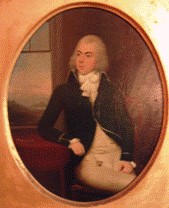
It is recorded that Lord Dinorben visited his mines at Parys Mountain on 26th September1843 and a great display of “Rock Cannon” was fired from the Great Open cast on the mountain.

The hotel itself is not named in the 1845 census or in the tithe schedule of the following year. A brewer called William Thomas who lived with his son Robert, His wife and 4 children are residents Market Street.
It was certainly called “Dinorben Arms” by 1848 and again in 1854.
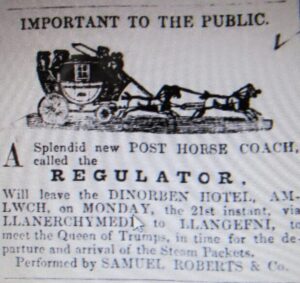
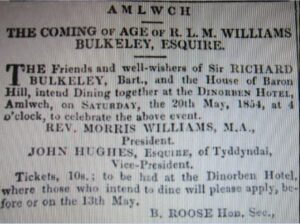
“The principal hotels are the Dinorben Hotel, Market Place and the Castle Hotel, Peters Street, which may be mentioned as two excellently conducted commercial and posting establishments. The Jenny Lind Coach leaves the Dinorben Hotel daily, (Sunday excepted) during the summer season, in time to meet the departure and arrival of the packets at the Menai Bridge” (Amlwch and its copper mines 1848).
Lord Dinorben died in February 1852, aged eighty-four and was succeeded in the barony by his younger but only surviving son William and is buried at the Church of St Gwenllwyfo in
Llaneilian
During the 1890s, the Dinorben Arms was designated a headquarters of the Cyclists’ Touring Club. The organisation has its origins in the early days of cycling when the bicycle opened up new horizons for independent travel. The Cyclists’ Touring Club set out to identify suitable hostelries for its members and include them in members’ guides and handbooks. Occasionally you will spot a round plaque on the wall of older hotels showing the Cyclists’ Touring Club emblem of a winged wheel indicating a long tradition of welcoming cyclists
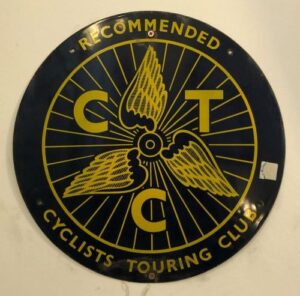
During the early days of the film making industry (circa 1910) the hotel was used as a base for the actors and crew in a film called “The Smugglers Daughter of Anglesey” in which a woman saves a lighthouse keeper from her smuggler father.
